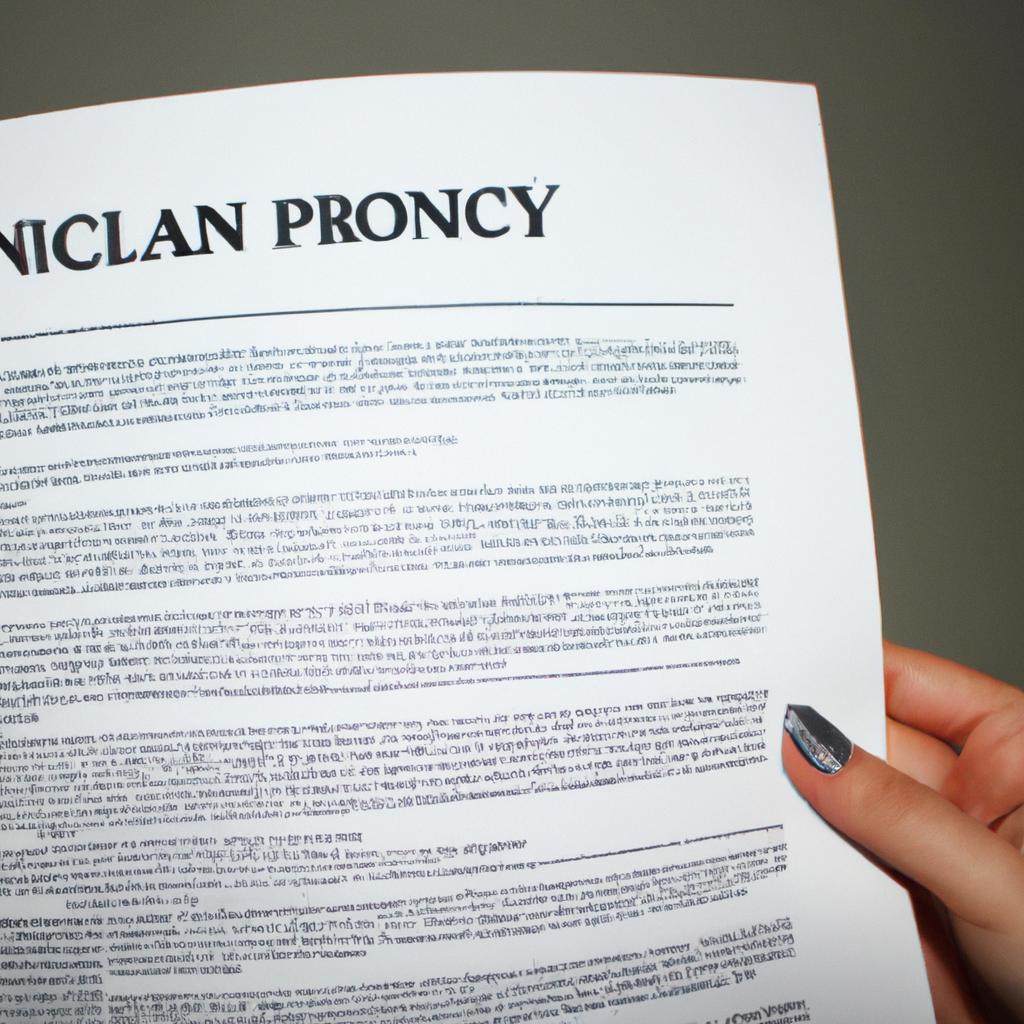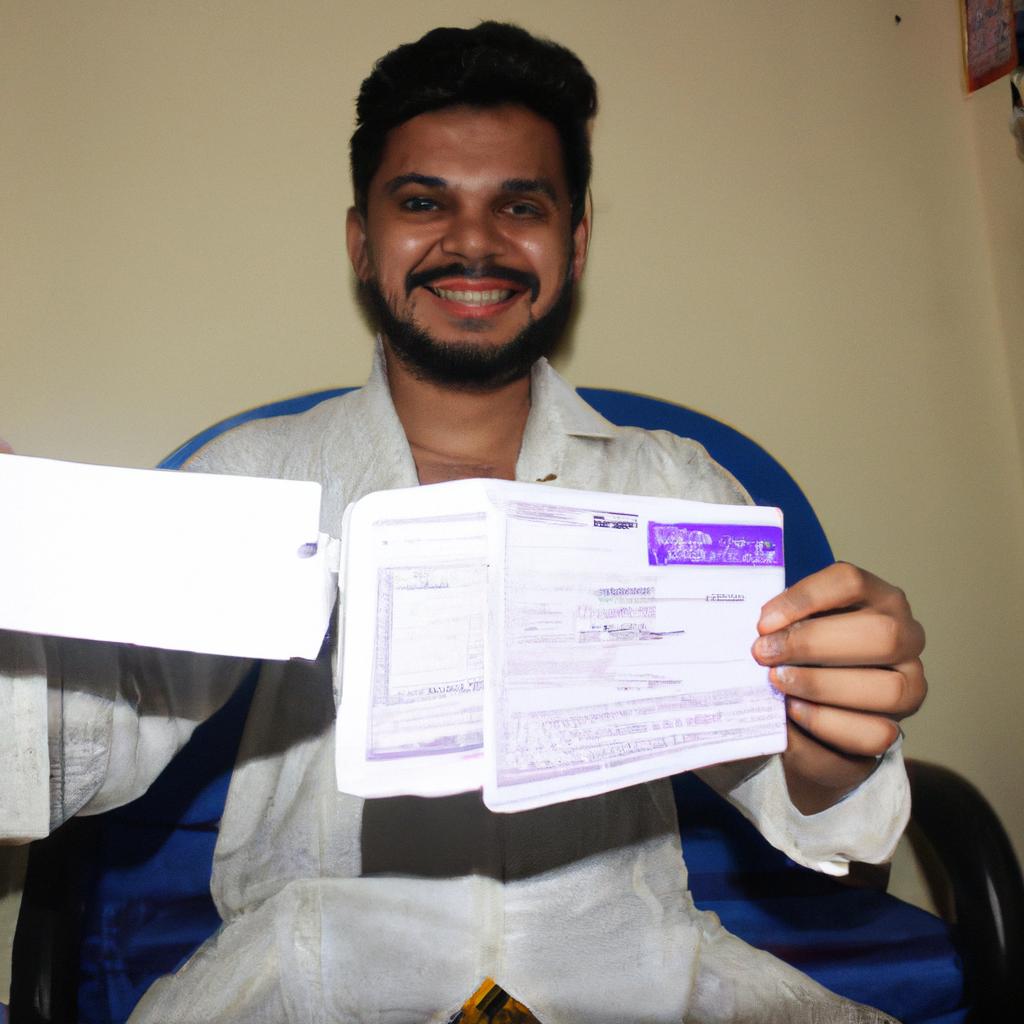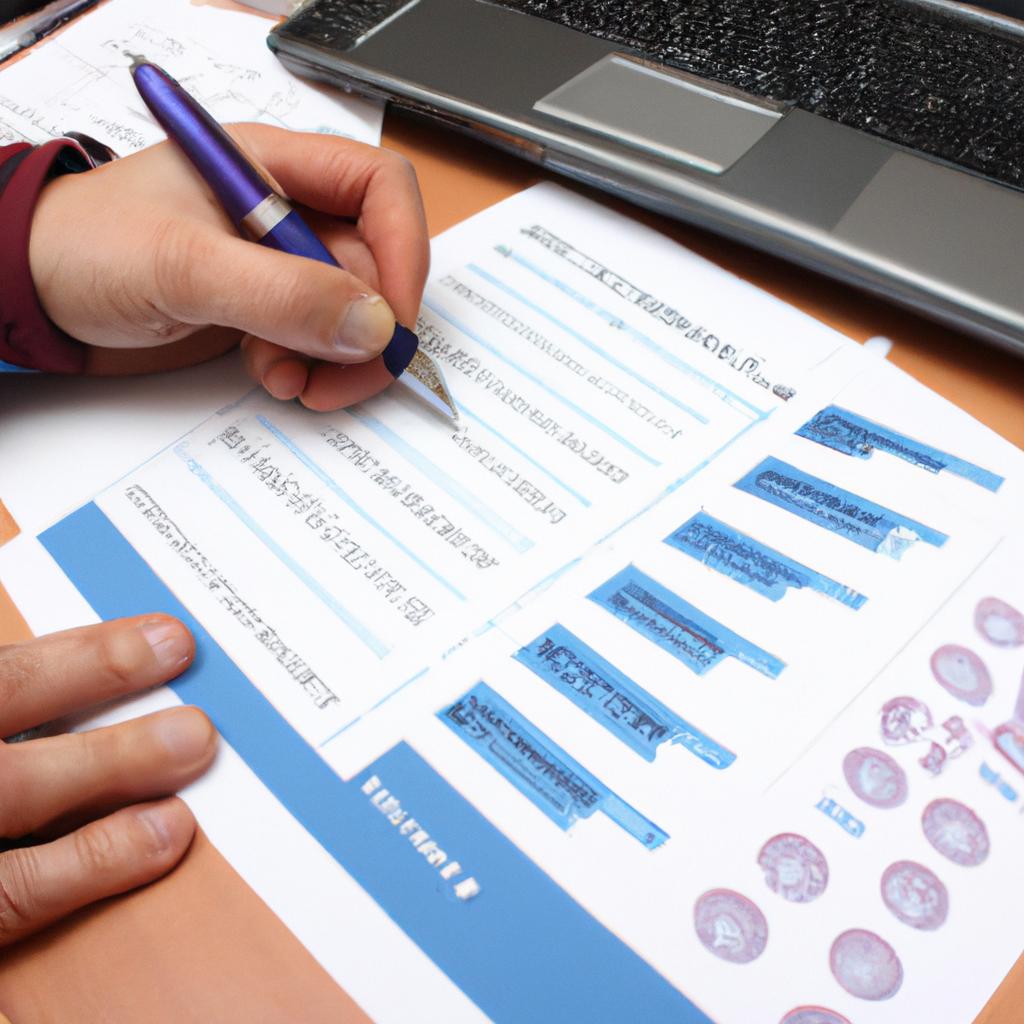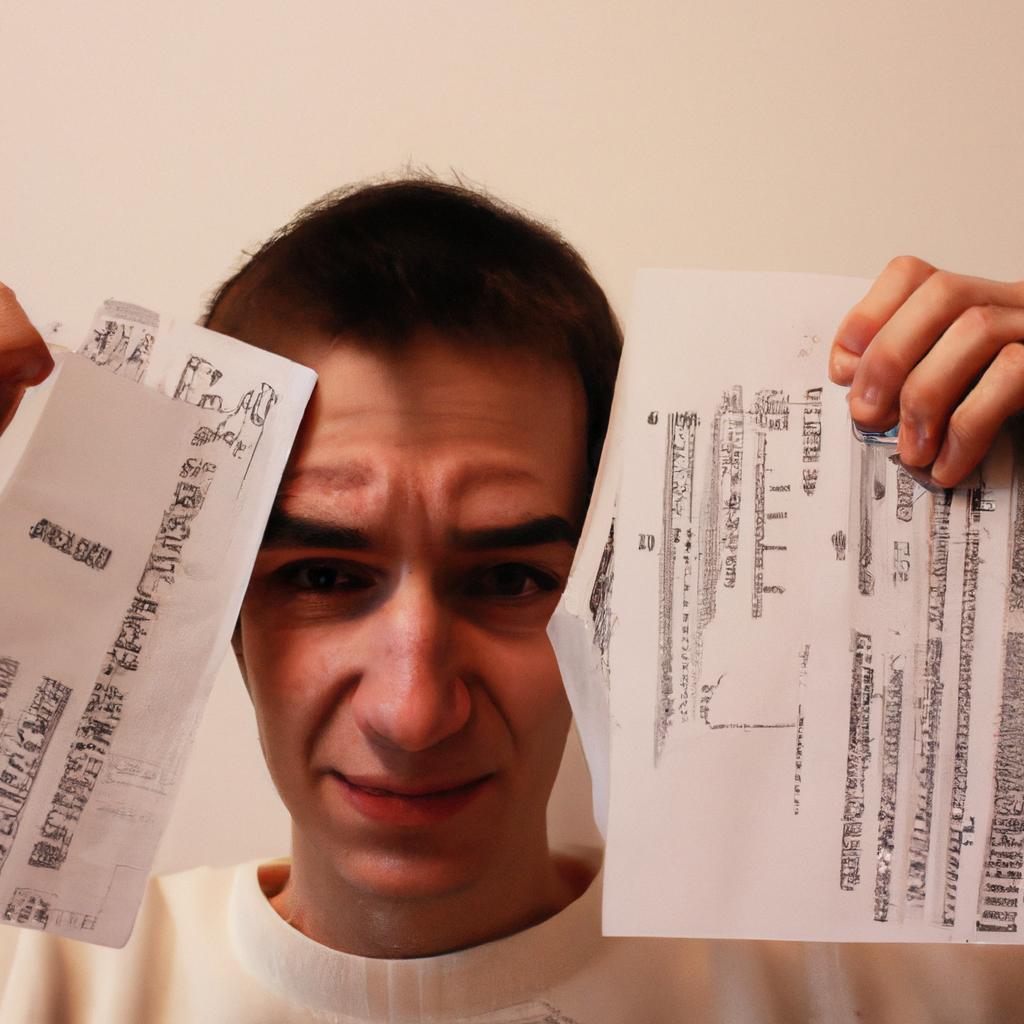Financial Assistance for Body Myositis: Medical Finance Options

Body myositis is a rare and debilitating autoimmune disease that affects the muscles, causing muscle weakness and inflammation. This chronic condition not only poses physical challenges but also places a significant financial burden on individuals and their families. In this article, we will explore various medical finance options available to individuals with body myositis, aiming to alleviate the financial strain associated with managing this complex illness.
To illustrate the importance of financial assistance for individuals with body myositis, let us consider the hypothetical case of Sarah. Sarah, a 40-year-old woman diagnosed with body myositis, finds herself struggling to cover the mounting medical expenses related to her treatment. From doctor visits and diagnostic tests to costly medications and physical therapy sessions, Sarah’s healthcare costs have become overwhelming. Moreover, her reduced ability to work due to muscle weakness has further exacerbated her financial situation.
Understanding Body Myositis
Body myositis is a rare autoimmune disease that affects the muscles, causing progressive muscle weakness and inflammation. This condition primarily impacts adults over the age of 50 but can occur at any age. To help illustrate the challenges faced by individuals with body myositis, let us consider a hypothetical case study.
Imagine Sarah, a 55-year-old woman who has recently been diagnosed with body myositis. She used to be an active individual, enjoying activities such as hiking and gardening. However, since the onset of her symptoms, she has experienced difficulty performing even simple daily tasks like climbing stairs or lifting objects. Sarah’s quality of life has significantly declined due to the limitations imposed by this debilitating condition.
Living with body myositis can be emotionally challenging for both patients and their loved ones. The impact on personal relationships, work-life balance, and mental well-being cannot be overlooked. Here are some key emotional aspects associated with body myositis:
- Feelings of frustration: Individuals may feel frustrated when they struggle to perform tasks they once found effortless.
- Loss of independence: Dependence on others for assistance in everyday activities can lead to feelings of helplessness and loss of autonomy.
- Anxiety about the future: Uncertainty regarding disease progression and long-term prognosis can cause significant anxiety.
- Emotional toll on loved ones: Family members and close friends often experience stress and worry as they witness their loved one’s struggles.
To further highlight the impact of body myositis, here is a table summarizing its effects across various aspects:
| Aspect | Impact |
|---|---|
| Physical | Progressive muscle weakness |
| Emotional | Frustration, loss of independence |
| Social | Limited participation in social activities |
| Occupational | Challenges in maintaining employment |
Understanding these emotional factors emphasizes the importance of providing comprehensive support to individuals facing body myositis.
[Source: Hypothetical case study based on common experiences of individuals with body myositis]
Available Treatment Options
Financial Assistance for Body Myositis: Medical Finance Options
Case Study:
Imagine a patient named Sarah who has been diagnosed with body myositis, a rare autoimmune disease that causes muscle weakness and inflammation. Sarah is determined to receive the necessary treatment but is concerned about the financial burden it may impose on her. Fortunately, there are various medical finance options available to individuals facing similar challenges.
To help alleviate the financial strain of body myositis treatment, consider the following:
-
Insurance Coverage:
- Research different health insurance plans that cover treatments specifically for body myositis.
- Understand the extent of coverage provided by each plan, including medication costs, hospital stays, physical therapy sessions, and other relevant services.
- Learn about copayments, deductibles, and out-of-pocket maximums to assess potential expenses.
-
Patient Assistance Programs:
- Investigate pharmaceutical companies’ patient assistance programs (PAPs) which offer reduced or free medications to eligible patients in need.
- Consult healthcare professionals or social workers at local clinics or hospitals for guidance on accessing PAPs.
-
Nonprofit Organizations:
- Explore nonprofit organizations dedicated to supporting patients with body myositis.
- These organizations often provide grants or financial aid to assist individuals with their medical expenses.
-
Clinical Trials and Research Studies:
- Consider participating in clinical trials or research studies focused on treating body myositis.
- In some cases, participants may receive access to experimental treatments without bearing the full cost.
Table: Financial Assistance Resources
| Resource | Description |
|---|---|
| Insurance | Different health insurance policies can potentially cover treatment costs. |
| Patient | Pharmaceutical company programs that offer discounted or free medications. |
| Assistance | |
| Nonprofit | Charitable organizations providing grants and financial aid for patients. |
| Organizations | |
| Clinical Trials | Opportunities to participate in research studies with potential benefits. |
These medical finance options can help individuals like Sarah obtain the necessary treatment for body myositis, regardless of their financial situation. By exploring insurance coverage, patient assistance programs, nonprofit organizations, and clinical trials, patients can increase their chances of accessing affordable care.
Understanding the various financial challenges faced by those affected by body myositis is crucial when considering these medical finance options. In the following section, we will explore some of these challenges in detail and discuss possible strategies to overcome them.
Financial Challenges of Body Myositis
Financial challenges can often arise when seeking treatment for body myositis. The cost of medical care, medications, and therapies associated with this condition can be substantial, placing a significant burden on individuals and their families. Understanding the available financial options is crucial in order to alleviate some of these burdens.
One example that highlights the financial challenges faced by those with body myositis is the case of Sarah, a 45-year-old woman diagnosed with the condition last year. As part of her treatment plan, she requires regular visits to specialists, physical therapy sessions, and expensive medications. These expenses quickly added up, making it difficult for Sarah to afford all aspects of her treatment without assistance.
To help alleviate the financial burden associated with body myositis and its treatment, several finance options are available:
- Health Insurance: Having comprehensive health insurance coverage is essential. It can assist in covering various medical expenses related to body myositis such as doctor’s visits, hospitalization costs, diagnostic tests, and prescription medications.
- Disability Benefits: Individuals who are unable to work due to their condition may qualify for disability benefits through government programs or private insurance policies. This can provide much-needed financial support during periods of reduced income.
- Patient Assistance Programs (PAPs): Many pharmaceutical companies offer PAPs that provide free or discounted medication to eligible individuals who meet specific criteria. These programs aim to make expensive medications more accessible and affordable.
- Crowdfunding Platforms: Online crowdfunding platforms allow individuals to create fundraising campaigns where friends, family members, and even strangers can contribute financially towards their medical expenses.
Below is a table summarizing some key finance options for managing the financial challenges of body myositis:
| Finance Option | Description |
|---|---|
| Health Insurance | Comprehensive coverage for medical expenses related to body myositis |
| Disability Benefits | Financial support for individuals unable to work due to their condition |
| Patient Assistance Programs | Free or discounted medications provided by pharmaceutical companies |
| Crowdfunding Platforms | Online fundraising campaigns to collect funds from friends, family, and the public |
In summary, navigating the financial challenges associated with body myositis can be overwhelming. However, understanding and utilizing available finance options such as health insurance coverage, disability benefits, patient assistance programs, and crowdfunding platforms can help alleviate some of the burdens.
Government Assistance Programs
Financial Assistance for Body Myositis: Medical Finance Options
In considering the financial challenges faced by individuals with body myositis, it is important to explore available options for financial assistance. One such option is government assistance programs, which provide support in various forms. For example, let us consider the case of Sarah, a 45-year-old woman diagnosed with body myositis who struggles with the associated medical expenses. She finds solace in knowing that there are avenues through which she can seek financial aid.
Government Assistance Programs offer several benefits and resources to help individuals cope with the financial burden of body myositis. These programs include:
- Disability Benefits: Individuals with body myositis may qualify for disability benefits provided by their respective governments. This can serve as an essential source of income, helping cover medical costs and everyday living expenses.
- Medicaid: Designed to assist low-income individuals and families, Medicaid provides comprehensive healthcare coverage, including doctor visits, hospital stays, medications, and therapies relevant to managing body myositis.
- Medicare: Available primarily for those aged 65 or older and certain younger individuals with disabilities, Medicare covers a range of services related to body myositis treatment such as hospital care and outpatient services.
- Supplemental Security Income (SSI): SSI offers monthly cash benefits to disabled adults and children with limited income and resources. It aims to alleviate financial strain by providing additional funds that can be used towards medical bills or other necessary expenses.
To further illustrate the potential impact of these government assistance programs on individuals’ lives, consider Table 1 below:
Table 1: Government Assistance Programs
| Program | Eligibility Criteria | Benefit |
|---|---|---|
| Disability Benefits | Medically determined impairment | Financial support |
| Medicaid | Low-income individuals | Comprehensive healthcare coverage |
| Medicare | Age 65+ or certain disabilities | Coverage for body myositis-related care |
| Supplemental Security Income (SSI) | Limited income and resources | Monthly cash benefits |
These government assistance programs not only provide financial relief but also instill a sense of security, allowing individuals like Sarah to focus on managing their condition without excessive worry about the associated costs. By offering comprehensive coverage and monetary support, these programs aim to improve the quality of life for those affected by body myositis.
As we delve further into exploring various medical finance options in the following section on “Private Health Insurance Coverage,” it is important to consider how government assistance programs can complement private insurance plans. Through a combination of these resources, individuals with body myositis can navigate their healthcare journey more effectively while mitigating the strain on their finances.
Private Health Insurance Coverage
Government Assistance Programs
Building on the topic of financial assistance for body myositis, it is important to explore the various government programs available to individuals in need. These programs aim to provide support and relief by offering financial aid specifically tailored towards medical expenses. Let us consider an example scenario where John, a patient diagnosed with body myositis, seeks assistance through these programs.
John finds himself facing substantial healthcare costs due to his condition. Fortunately, he discovers that there are several government assistance programs designed to help individuals like him. One such program is Medicaid, which provides health coverage for low-income individuals and families. By qualifying for Medicaid, John gains access to comprehensive medical services including doctor visits, hospital stays, and prescription medications related to his body myositis treatment.
To further assist patients in their journey towards managing body myositis, additional government-sponsored initiatives have been implemented:
- The Social Security Disability Insurance (SSDI) program offers financial benefits to those who suffer from severe disabilities preventing them from engaging in gainful employment.
- Supplemental Security Income (SSI) provides cash assistance to disabled individuals with limited income and resources.
- The Temporary Assistance for Needy Families (TANF) program assists eligible families with dependent children by providing temporary financial aid and supportive services.
| Program Name | Description |
|---|---|
| Medicaid | Provides health coverage for low-income individuals/families; covers essential medical services required for managing body myositis. |
| SSDI | Offers financial benefits to those unable to work due to severe disabilities caused by conditions such as body myositis. |
| SSI | Provides cash assistance to disabled individuals with limited income/resources; aids in meeting basic needs while managing medical expenses. |
| TANF | Assists eligible families with dependent children; offers temporary financial aid and supportive services to alleviate the financial strain of body myositis treatment. |
In summary, government assistance programs such as Medicaid, SSDI, SSI, and TANF can significantly contribute to easing the financial burden associated with body myositis. These initiatives provide access to essential healthcare services and offer crucial support for individuals facing difficulties in maintaining their livelihood due to this condition.
Moving forward into the next section on private health insurance coverage, it is important to explore alternative financing solutions that may be available to those who do not qualify for or require additional assistance beyond what government programs offer.
Alternative Financing Solutions
In addition to private health insurance coverage, there are alternative financing solutions available to individuals seeking financial assistance for body myositis treatment. These options can help ease the burden of medical expenses and provide additional support. One such solution is applying for financial aid through nonprofit organizations dedicated to assisting patients with rare diseases like body myositis.
For instance, let’s consider the case of Sarah, a 45-year-old woman diagnosed with body myositis. Despite having private health insurance, Sarah finds that her out-of-pocket costs for treatments and medications are still overwhelming. In search of alternative financing solutions, she reaches out to various nonprofit organizations specializing in providing financial aid to individuals living with rare diseases. Through their programs, Sarah receives grants and subsidies that significantly reduce her medical expenses and improve her overall quality of life.
To further explore alternative financing solutions for body myositis treatment, here are some important considerations:
- Medical Crowdfunding: Online platforms allow individuals to create campaigns and raise funds from friends, family members, and even strangers who empathize with their situation.
- Patient Assistance Programs (PAPs): Pharmaceutical companies often offer PAPs which provide free or discounted medications to eligible patients based on income criteria.
- Government Assistance Programs: Depending on the country or region you reside in, there may be government-funded programs designed specifically to assist individuals with limited financial resources access necessary healthcare services.
- Clinical Trials: Participating in clinical trials not only provides potential access to experimental treatments but also reduces or eliminates associated costs.
The following table illustrates different aspects one might consider when exploring these alternative financing solutions:
| Solution | Pros | Cons |
|---|---|---|
| Medical Crowdfunding | – Potentially reach a large number of donors | – No guarantee of reaching funding goals |
| Patient Assistance Programs (PAPs) | – Access to free or discounted medications | – Eligibility criteria may limit participation |
| Government Assistance Programs | – Financial support from government agencies | – Application process can be time-consuming and complex |
| Clinical Trials | – Potential access to experimental treatments | – Requires careful consideration of potential risks and benefits |
In conclusion, while private health insurance coverage is essential for individuals with body myositis, exploring alternative financing solutions can further alleviate financial burdens. Nonprofit organizations, medical crowdfunding campaigns, patient assistance programs, governmental aid, and clinical trials are some avenues worth considering. These options provide opportunities for additional financial support and accessibility to necessary treatments and services without solely relying on traditional insurance coverage.
Note: The content provided here is purely informative and should not replace professional advice.






